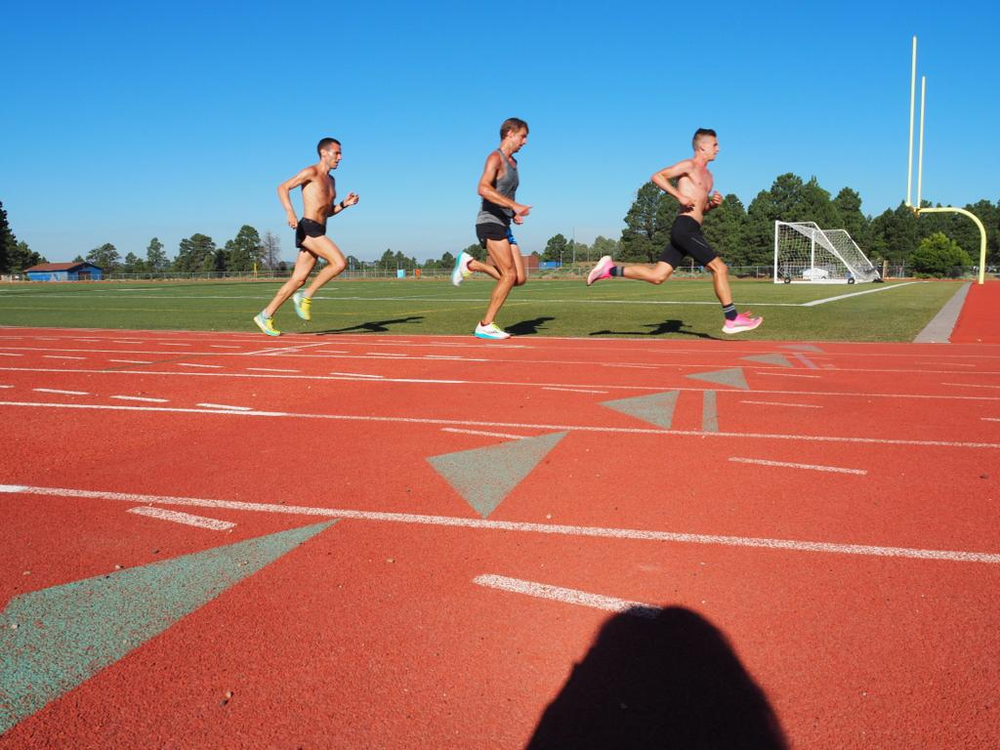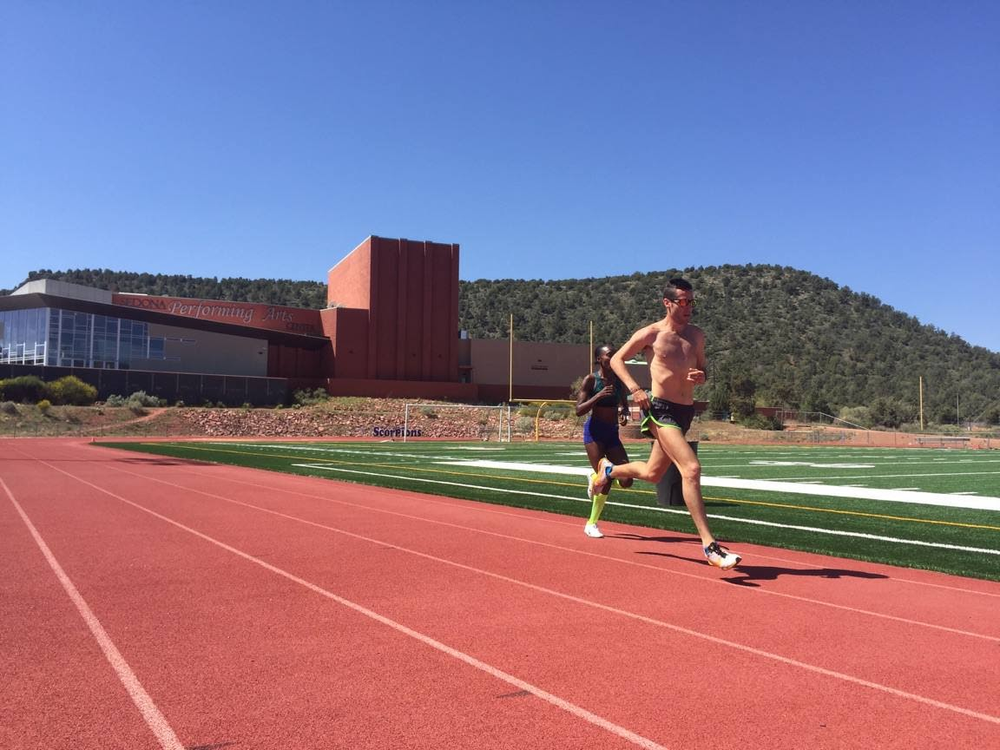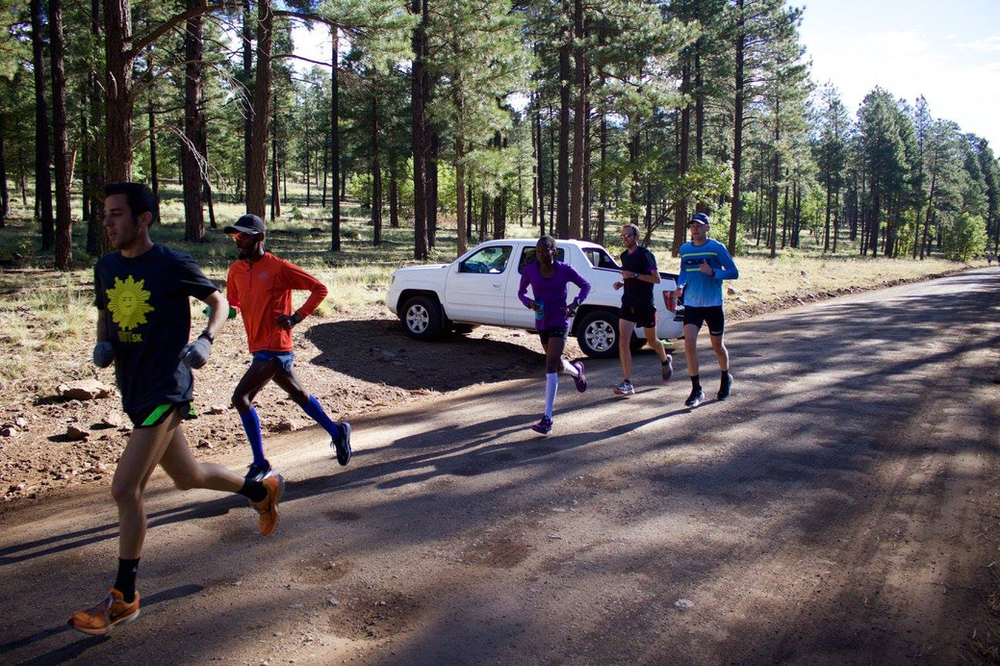Order of Operations for an Interval Workout
a love story by Will Baldwin
Introduction
This might be one of the most important things I’ve written. Like almost everything I write, it stems from a specific conversation I’ve had 300 times with about 100 athletes; do the math on that one, brainiacs.

Luckily, after almost a decade, I’ve gotten better at explaining my thought process. What I’m trying to say is that most people are really bad at doing interval workouts, and I’m going to try to make you guys less bad at it; no promises.
The details in a workout really matter. How long your rest intervals are, what you do on those rest intervals, the rest-to-work ratio, how your speed and threshold zones were calculated—all this stuff significantly impacts what we get out of the workout and whether or not it makes us faster. Instead of giving one of my long-winded philosophical monologues, I decided to make an interval workout Order of Operations. Fun Fact, I was a high school math teacher for seven years. You might remember the order of operations in math, PEMDAS or GEMDAS, which is an acronym that told us which part of a math equation to start working on first. It guided us step by step on what order to focus on stuff. And that’s right, all you cool cats and kittens, I’m about to do that right now, but for running stuff; and not Algebra.
This all assumes we’re healthy, feeling fresh, and ready to work out.
The Warm-Up
Not really a focus at all. Run your warm-up as slow as you want. Outside of maybe a very rare specific marathon workout, the warm-up jog is never a focus.
Focus on the Fast Intervals
For the majority of the workouts I give, there is a pace range for every single part, including the fast intervals. **YOU DO NOT NEED TO BE UNDER THE LOW END OF THIS PACE RANGE.** So many folks will comment that they felt like they ‘missed’ a rep if it wasn’t faster than the fastest pace listed. No sir. We want to be in the range, if possible, and we want to have gotten there as smoothly as possible. It’s better to have been inside the pace range, relaxed, moisturized, thriving, in your lane, than to have gotten wild and beaten the pace range. No sir.
First Goal: Get Inside the Pace Range
Get inside the pace range comfortably and smoothly. Avoid the mindset of having to beat the fastest pace.
Caveat to the First Goal
Paces are just a guide. Heat, elevation, humidity, altitude, vibes, pollen, fatigue, and everything else that exists impact our paces. The paces listed are a compass. Head in that direction. If it feels off, use your best judgment and adjust accordingly.
Second Focus: The Rest Intervals
The next focus, and holy smokes, this is crazy important, is how we handle the rests. The most common way folks run interval workouts is that they go too hard on the FAST portion of the intervals, trying to BEAT the lowest pace listed, and then they walk or just stand around on the rests because they’re tired from running too fast during the ON portion. Uhm, don’t do that! I rarely write the rests as a walk; they’re almost always written as a jog.
Sometimes, even when we’re inside the pace range, not trying to beat it, it’s still too challenging to jog on the rests. That’s normal and okay! But if we feel good and we feel like we’re up for it, we want to lightly jog the rest. This jog can range from the slowest shuffle you’ve ever seen all the way up to the fast side of an easy day. It’s up to you and how the workout is going. It’s usually pretty slow. The main point of this second focus is that when we’re feeling good, strong, and capable, we want to usher that energy into jogging the rest portion and not running the hard intervals faster. Also, did you know we actually clear lactate and waste products out of the muscles more quickly with a light jog over a walk? Wow, that’s cool!
In the end, it’s not just about how fast you run, but how you run fast.
Second Goal/Focus
If we’re feeling good, we’re going to jog the rest BEFORE we run faster than the listed interval paces.
Pushing the Pace
Now, we don’t often get past these two steps. If we do, I probably need to readjust our intensities, but it happens. If you make it to step three, meaning you have run a few intervals inside the pace range, you are relaxed, and you’ve been able to jog the entire rest portion, THEN we can start pushing the pace on the faster intervals. This is where we start challenging ourselves in the second half of the workout and seeing what we’re capable of!

Why This Approach Works
There’s a few main reasons. Let’s start with specificity. Running, for the most part, is a continuous event. When you sign up for a race, there are no built-in breaks or rest periods. You’re rewarded for your ability to run fast continuously without breaks. The bigger our breaks are in our workouts, the less specific they become, which means the fitness adaptations start to diminish.
A good way to think about this is in the context of threshold workouts. Good ole T pace. Many of the benefits of threshold work come from the total time spent in our actual threshold zone. Now, most coaches, especially me, will break threshold work up into shorter intervals so we can go a little faster but longer. We put rest intervals in there! You’ve seen them! The rest intervals allow us to lower our heart rate and clear some lactate out of our blood and muscles, and then we can do more threshold work. But every time we take one of those rests, we leave our threshold zone, briefly. Then, when we start our next rep, it will take a little bit of time to get back into our threshold zone again. The more extreme our rests are, the longer it takes us to get back into that zone, culminating in overall less time spent in the magical zone that makes us faster and better looking.
Focusing on Effort, Style, and Intensity
Perhaps the most important point of this entire article is thinking not about how fast we run workouts pace-wise, but how we run them—in terms of effort, style, and intensity.
Imagine the feeling when you’re racing a 10k, half marathon, or full marathon. Think about the effort sustained over 30 minutes to 2 hours. It’s tough but sustainable; it has to be, or you can’t finish. In workouts, we often try to replicate a similar effort. Since our workouts are broken into segments and intervals, that same effort often results in running even faster than race pace, which is great! We’re still practicing that familiar race-like effort. One of the most crucial things we can practice in a workout is moving at goal race pace or faster while staying smooth. It’s quite easy to do if we’re strategic about it.
The magic happens when we focus on moving at goal race pace or faster, all while being smooth. It’s not about pushing harder; it’s about being smarter. Relaxation and smoothness are your allies. They help you accumulate more time at those crucial, specific paces. Staying relaxed keeps your heart rate and lactate levels in check, letting you sustain effort for longer.
In the end, it’s not just about how fast you run, but how you run fast.

The Point
Workouts are bouts of harder running to create a response from our body, where we overcome the hard work and fatigue to come back even faster. Workouts aren’t tests. We don’t fail them. If we don’t hit paces on a particular day, it might just mean they were written at too fast of splits to begin with, or our body was just off that day. It’s a gift to be able to run and move our bodies. It’s brave to be able to attempt a hard workout, knowing you might miss the paces and fail! We’re not robots. We’re just regular folks out there doing our best. Within that, though, we want to approach our workouts in the smartest way possible. It’s hard enough getting out the door and doing these difficult workouts.
Conclusion
The key takeaway here is to focus on staying within your designated pace range during the fast intervals, and then evaluating if you could be jogging during the rest intervals, if you’re capable, and it makes sense to do so. This method not only improves your ability to sustain effort but also makes your workouts more specific to racing conditions. By avoiding the common mistake of running too fast during the hard portions and then walking or standing during the rest, you can enhance the effectiveness of your interval training and make greater strides in your running performance.
Remember, successful training is about developing skills that translate to race conditions. Consistent pacing and active recovery are essential components that will help you achieve your best performance on race day.


